Alexander Günsche
Interface Contracts in Microfrontend Architectures
#1about 1 minute
Why incremental modernization beats a big bang rewrite
Rewriting a legacy monolith from scratch is risky and expensive, making an incremental approach better for both developers and the business.
#2about 6 minutes
Evolving from layered architecture to vertical slices
Microfrontend architecture extends backend microservice patterns to the frontend, creating autonomous, full-stack teams aligned with business domains.
#3about 4 minutes
Defining microfrontend boundaries using domain-driven design
Use principles from domain-driven design (DDD), like bounded contexts and communication patterns, to determine the right size and scope for each microfrontend.
#4about 8 minutes
Implementing communication with attributes and custom events
Microfrontends communicate indirectly by receiving data through HTML attributes and emitting data via custom events, with the host page acting as a mediator.
#5about 7 minutes
Standardizing interfaces with the open MFE specification
The Open MFE standard provides a formal way to define, document, and test microfrontend interfaces using a manifest file, similar to OpenAPI for REST APIs.
#6about 4 minutes
Applying the strangler fig pattern to legacy apps
Gradually modernize a legacy application by wrapping existing features in microfrontends or introducing new ones, slowly 'strangling' the old monolith.
#7about 1 minute
Avoiding runtime coupling with a shared UI library
To maintain autonomy and avoid runtime dependencies, teams should consume shared assets like CSS and icons from a versioned UI library at build time.
#8about 6 minutes
Architectural trade-offs and testing strategies
A frameworkless approach prioritizes migration over raw performance, and testing should focus more on integration tests than unit tests to validate cross-component flows.
#9about 7 minutes
Securing and monitoring microfrontend communications
Secure interface contracts like any other web API, and monitor component interactions by emitting analytics events to be handled by the host page to preserve encapsulation.
#10about 9 minutes
Managing shared dependencies and component nesting
Avoid runtime nesting of microfrontends and instead share common logic through versioned libraries consumed at build time, accepting code duplication as a trade-off for autonomy.
Related jobs
Jobs that call for the skills explored in this talk.
Matching moments
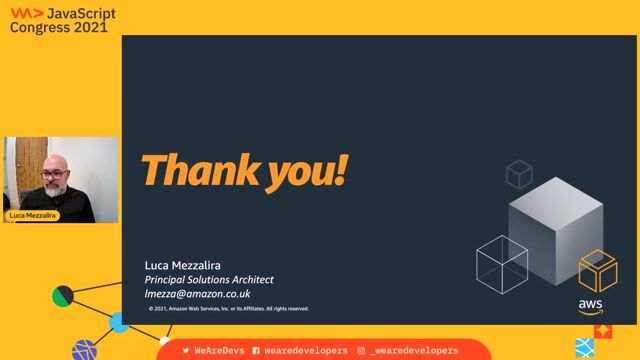
33:55 MIN
Audience Q&A on practical micro-frontend challenges
Micro-frontends anti-patterns

00:42 MIN
A brief history of the micro-frontend architectural pattern
Micro-frontends anti-patterns

27:46 MIN
Combining micro frontends with an islands architecture
Multiple Ships to the Island - Micro Frontends & Island Architectures

10:34 MIN
Implementing microservice and micro-frontend architectures
Crew Management System for Airlines: Plan duties for pilots & flight attendants worldwide
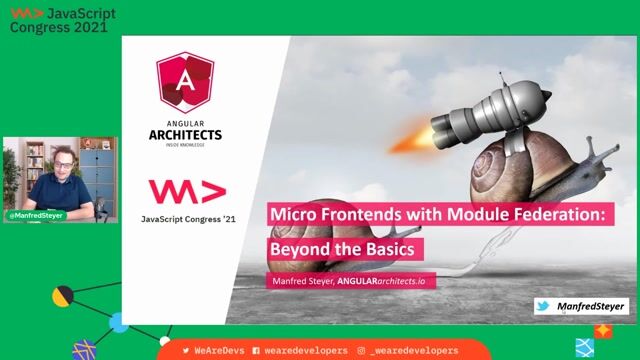
00:18 MIN
The role of micro-frontends in scaling development teams
Micro-Frontends with Module Federation: Beyond the Basics
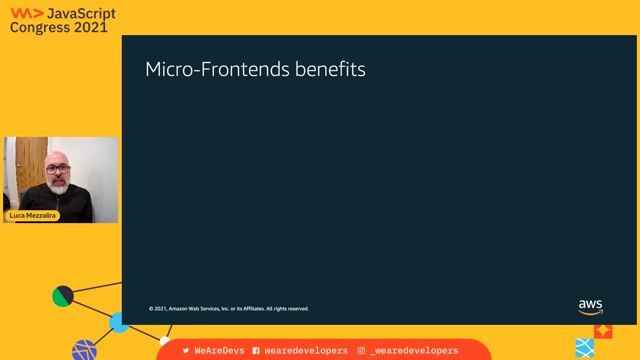
03:59 MIN
Understanding the key benefits of micro-frontend architecture
Micro-frontends anti-patterns

00:11 MIN
Understanding the purpose and benefits of micro-frontends
Stairway to Heaven - Scaling Frontends the Right Way
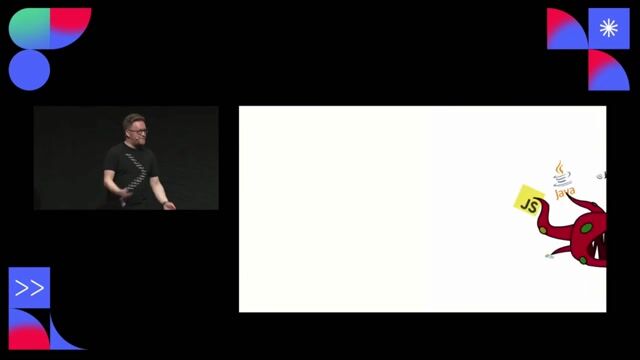
22:05 MIN
A step-by-step battle plan to defeat legacy monsters
Defeat that legacy monster! Guerilla refactoring with web standards
Featured Partners
Related Videos
 59:03
59:03Multiple Ships to the Island - Micro Frontends & Island Architectures
Florian Rappl
 35:17
35:17Front-End Micro Apps
Serg Hospodarets
 24:47
24:47Advanced Micro Frontends: Multi-Version and Multi-Framework Scenarios
Manfred Steyer
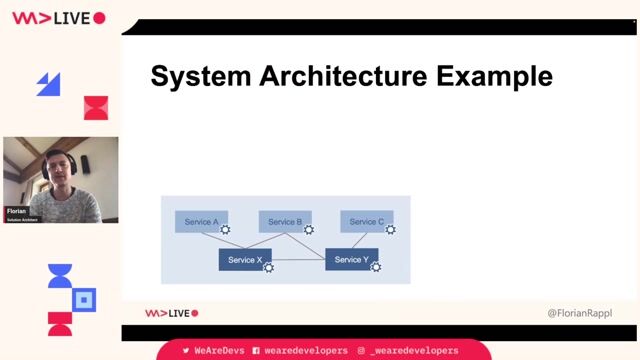 58:32
58:32Microfrontends with Blazor: Welcome to the Party!
Florian Rappl
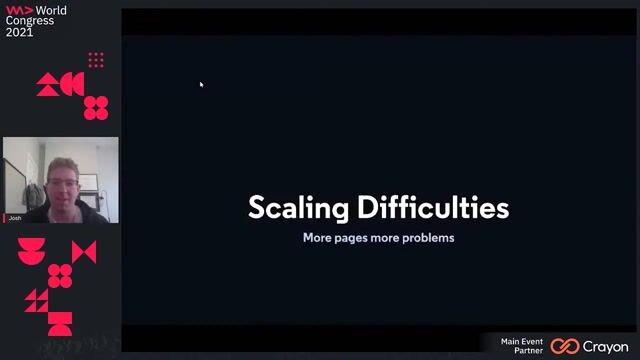 43:20
43:20Microfrontends at Scale
Josh Goldberg
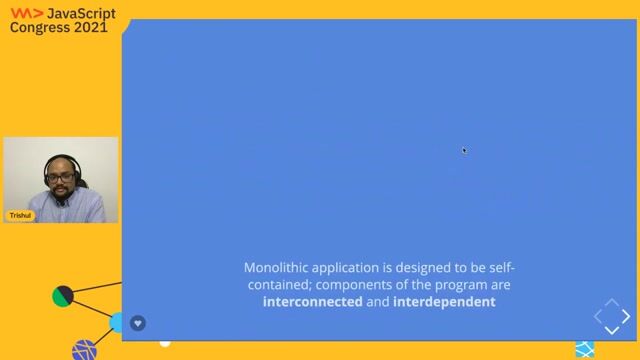 41:49
41:49Destructuring Frontend monoliths with MicroFrontends
Trishul Goel
 46:39
46:39Frameworkless: How to use Web-Components in production?
Tobias Münch
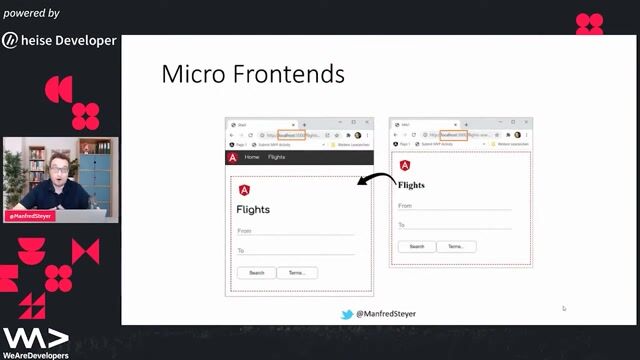 45:40
45:40Micro Frontends with Module Federation: Why and How?
Manfred Steyer
From learning to earning
Jobs that call for the skills explored in this talk.

Frontend Angular Entwickler - Architecture Owner - München - C1 Deutsch
Tech Solutions Gmbh
Remote
€100K
Java
Angular
Software Architecture


Senior Fullstack Engineer – Angular/.Net (f/m/d)
Apaleo
München, Germany
Remote
€65-85K
Senior
.NET
Angular
JavaScript
+1

Lead Full-Stack Engineer
Hubert Burda Media
München, Germany
€80-95K
Intermediate
Senior
React
Vue.js
Node.js
MongoDB
+1

Backend Engineer (m/w/d)
fulfillmenttools
Köln, Germany
€35-65K
Intermediate
TypeScript
Agile Methodologies
Google Cloud Platform

Senior Fullstack Engineer (all genders)
envelio
Köln, Germany
Remote
Senior
Python
JavaScript
Structured Query Language (SQL)

Cloud Engineer (m/w/d)
fulfillmenttools
Köln, Germany
€50-65K
Intermediate
TypeScript
Google Cloud Platform
Continuous Integration

Lead Fullstack Engineer AI
Hubert Burda Media
München, Germany
€80-95K
Intermediate
React
Python
Vue.js
Langchain
+1

Fullstack Software Developer (m/w/d) C#/Golang & Angular
DMG MORI Digital GmbH
Pfronten, Germany
Intermediate
C#
Docker
Angular